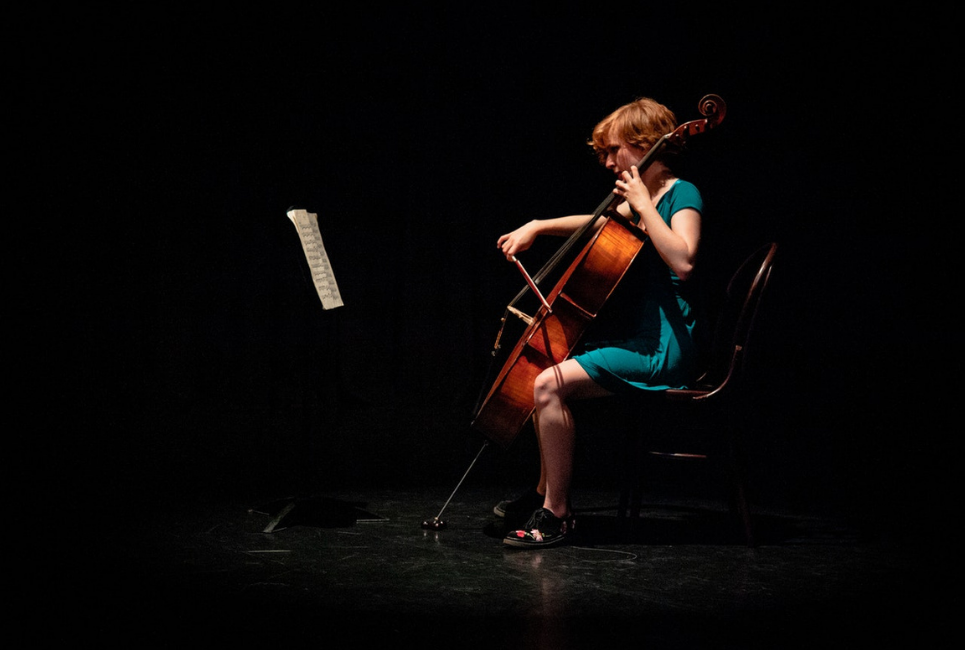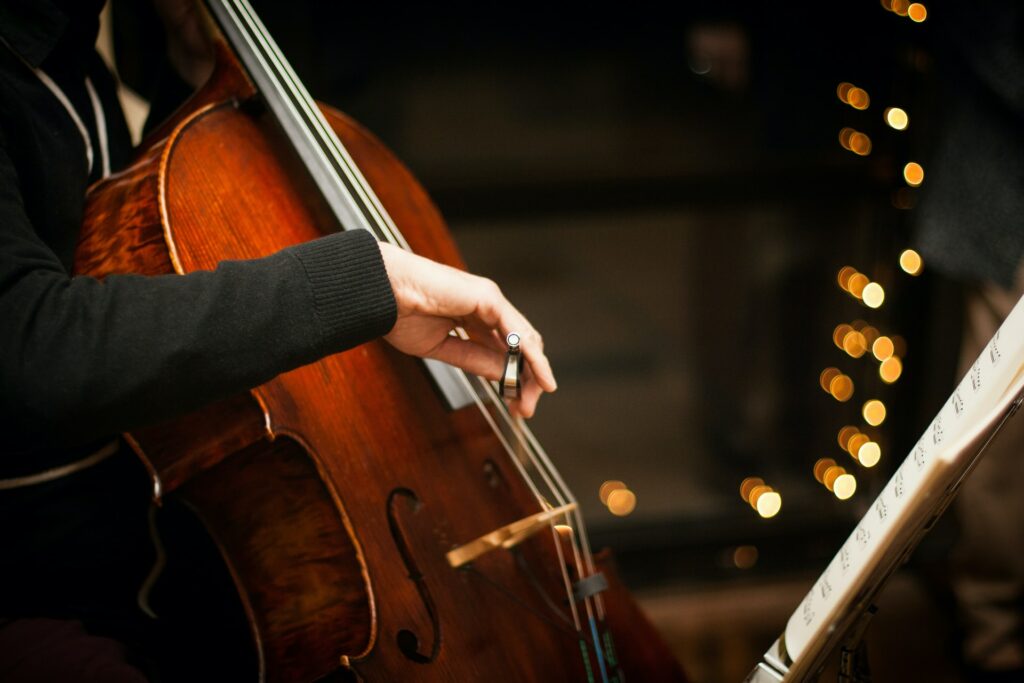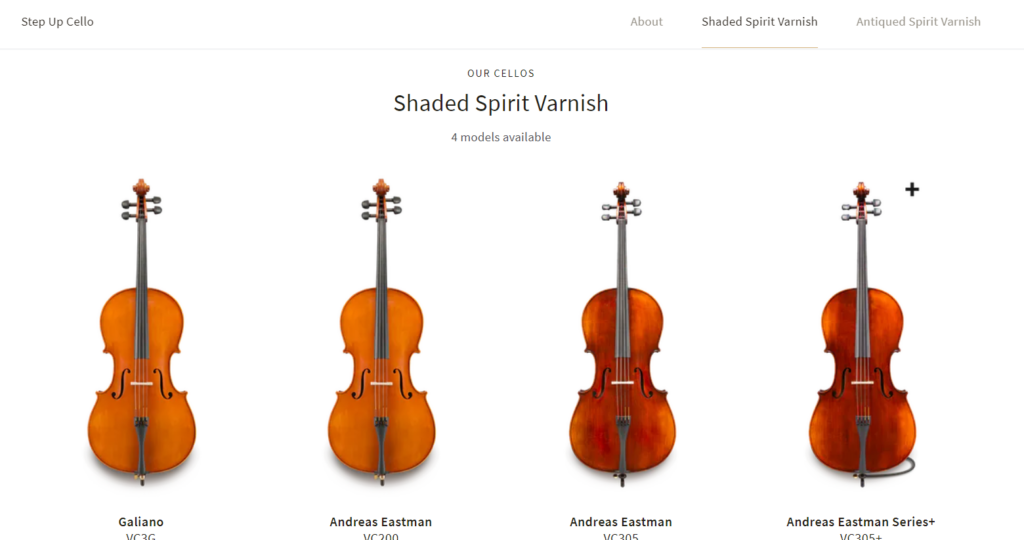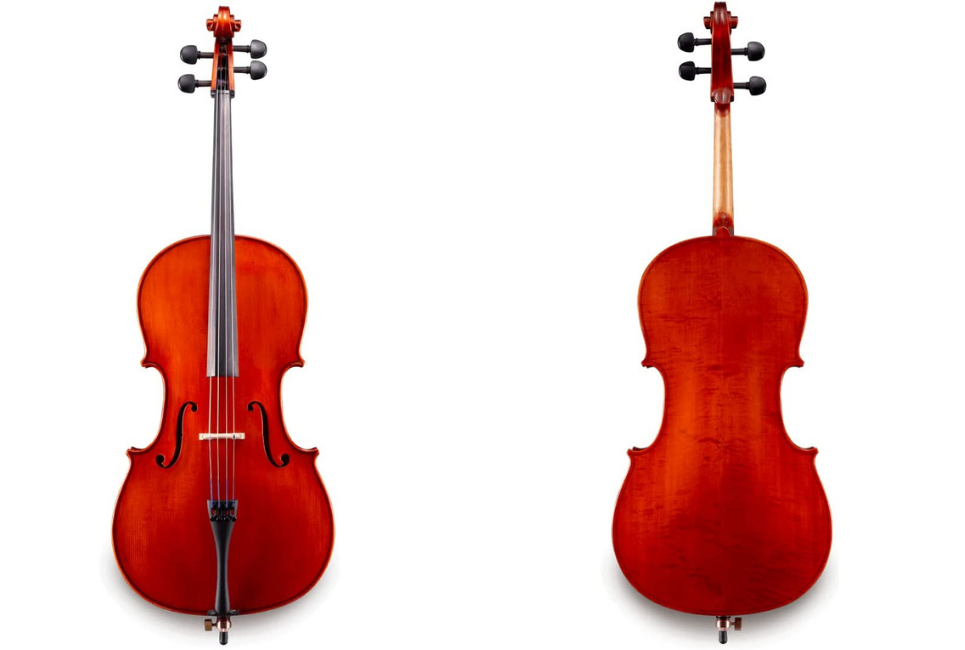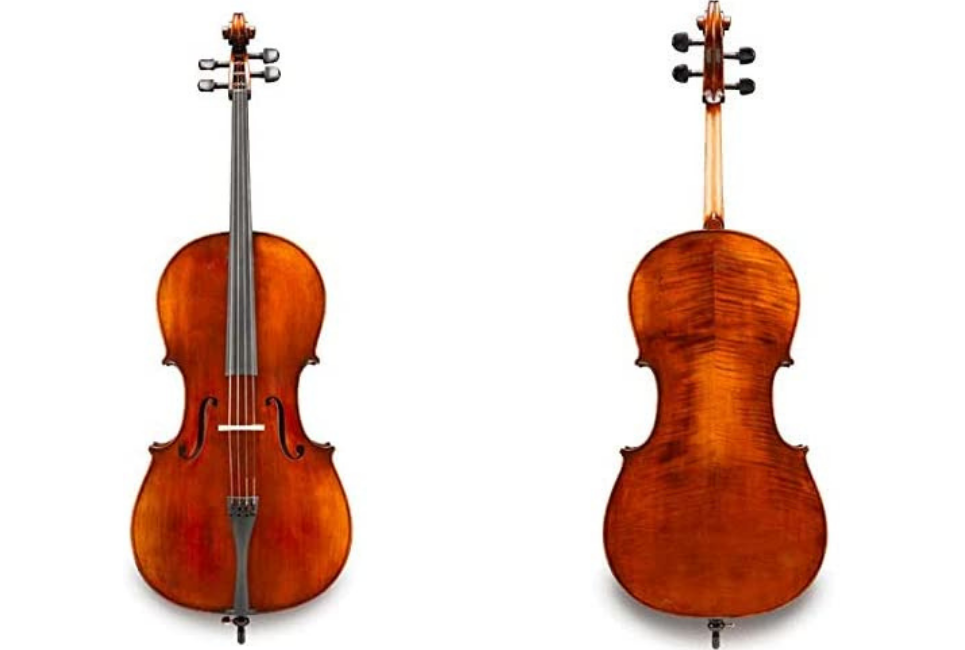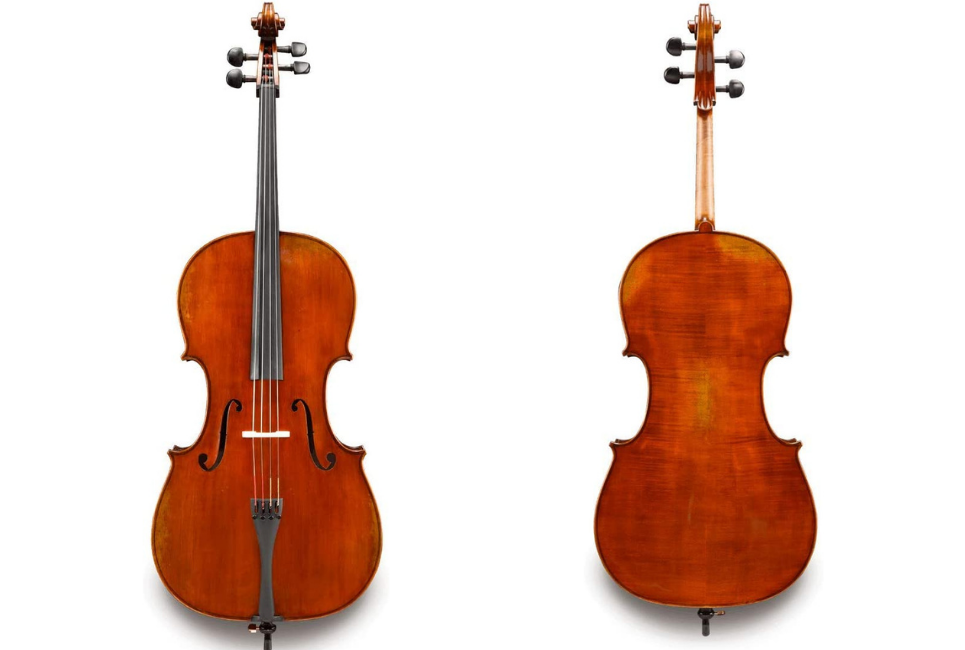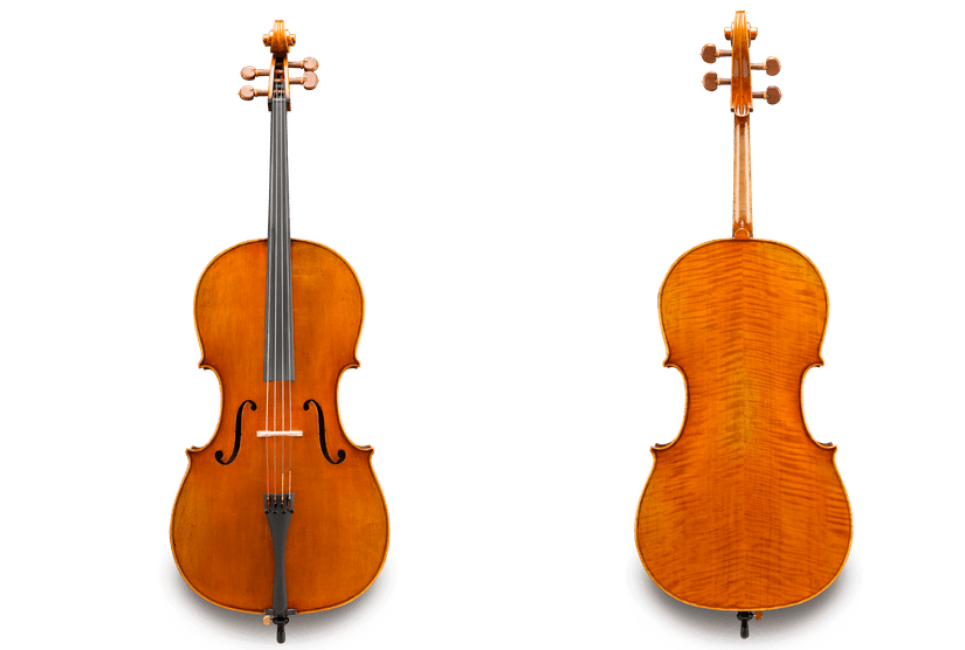- Best Carbon Fiber Cello Options - December 28, 2021
- How to Find the Best Electric Cello: Why I Love The Bridge Draco - December 16, 2021
- How to Find the Best Jazz Cello: Jazz Cello’s I Recommend - December 13, 2021
In 1994 Qian Ni, a flutist and music scholar opened his own musical instrument workshop in Beijing. Today Ni’s workshop has grown into the Eastman Music Company, a world-renowned maker of stringed instruments. Eastman offers cellos at every level, from student models to top-grade cellos found in conservatories and symphony orchestras worldwide. Cellists can choose between a wide variety of Eastman models, including electric cellos!
So which Eastman cello is best for you?
While you really can’t go wrong with any Eastman instrument, you should do your research before investing in a cello. That’s why I’ve created a quick synopsis of Eastman’s cello lines, along with my suggestions for the best cello at each level. Whether you’re a beginner, a student looking for a better instrument, or an aspiring professional cellist, this article will help you find your perfect Eastman cello.
Top Pick
Andreas Eastman Model 305
It’s a quality student instrument that can stick with you or your student for years. For many players, it may be the only cello they need to own. Additionally, an Eastman 305 will retain value when cared for.
What You Should Look For in a Cello
When you’re shopping for a cello, here are some things to keep in mind.
Cello size
See our guide to cello sizes to find out what size cello your student needs. The smaller cello sizes are harder to find on the higher end. Players young enough to need a smaller instrument are not at a stage where they would benefit from a professional instrument.
Performance Level
A great musician can make a student instrument sound like a $20,000 cello. A beginner will make a $20,000 cello sound like a student instrument. Spend the extra money on lessons for your beginner rather than splurging on a professional cello. Eastman’s student line will let your student sound their best and provide them with a solid foundation for a musical career. It may be the only instrument they need for a lifetime of joyful music-making.
Durability
A finicky 18th-century cello with a gorgeous tone might suit the needs of a professional cellist who knows how to maintain a delicate instrument. Young students will do much better with a durable cello like the Samuel Eastman 100 that stays in tune, projects the sound well, and stands up to wear and tear.
Amplification
Suppose you are using your cello for recordings or venues that will require amplification. In that case, Eastman’s Series+ cellos come with a pickup at the top and a 3.5mm jack near the endpin. You can plug your Series+ into an audio interface or amplifier or listen through your headphones for rehearsals or recording. The Series+ cellos also give you access to foot pedals and other effects in live performance.
Online vs Local Shopping
Buying online is convenient and lets you find the best price. But there are some advantages to supporting your local instrument dealer when you are cello shopping. Shopping locally gives you a chance to try the instrument out yourself. Mastering the cello means long hours of rehearsal. You want an instrument that sounds not only good, but also feels comfortable.
An instrument shop can set up your cello and make any necessary adjustments. If you buy online, it will be worth your while to get your instrument checked by a luthier who can plane down the fingerboard, adjust the tailpiece, apply wolf eliminators, and bring out the absolute best in your new instrument.
How I Chose the Best Eastman Cellos
Eastman sells its cellos at four levels: Student, Step-Up, Advanced, and Professional. I have chosen the best cellos within those lines and have explained why that cello stood out from its peers. I looked for the best possible workmanship at each level.
You might prefer a different model within the Eastman lines, and you wouldn’t be wrong. The best Eastman cello is the one that plays best for you. For situations where my pick might not work, I have offered alternative Eastman models that might better meet your needs.
Best Eastman Student Cello: Samuel Eastman Model 100
Eastman’s Model 100 cello is built with a solid Chinese spruce front and a Chinese maple back. (China still has many old-growth forests whose wood makes superb instruments). Eastman’s Model 80 and Model 95 student cellos use laminate wood for the back. Laminate wood has less natural resonance than solid boards and results in an inferior tone. The Model 100 also has hand-inlaid purfling. The purfling on the Model 80 is entirely painted and decorative. At the same time, the Model 95 only uses inlaid purfling on the cello front. Inlaid purfling provides protection against the cello body cracking due to impacts or humidity changes, so this is important.
All Eastman’s student cellos use laminate wood for the ribs (sides) and a composite tailpiece. But they use ebony for the fingerboard and tuning pegs. Many cheap cello makers use painted hardwoods, which wear out quickly and stain students’ fingertips as they play. And all Eastman cellos, even their student models, get their bridges from legendary French bridge maker Despiau.
Because cello beginners come in all sizes, the Eastman 100 is available from 4/4 to 1/10.
Pros
- Excellent resale value when you decide to upgrade
- Many features not found on cheaper student cellos
- Available in every size so even the smallest cello student can play on an Eastman 100
Cons
- More expensive than many student cellos, but you get what you pay for
Best Eastman Step-Up Cello: Andreas Eastman Model 305
The Eastman 100 will take you through several years of practice and rehearsal. It will always be a solid backup and practice cello. But if you become a more serious cellist, you may want to look at a more professional model. Eastman’s most popular step-up cello is the Model 305.
The cellos in Eastman’s step-up line are made entirely with solid wood. The generic composite tailpiece used on the student models is replaced with a tailpiece built by German instrument accessory maker Wittner, and a higher quality Despiau bridge is used on the step-up line. And while the Eastman 100 comes with the well-regarded D’Addario Prelude strings, the 305 can be strung with Preludes or the darker and richer D’Addario Helicores.
The Model 305 also offers you a choice of body styles. The Model 100 is based on a design by Antonio Stradivari. You can buy a 305 Stradivari, or you can get a 305 based on a cello by Domenico Montagnana. Eastman’s Montagnana cello is a tiny bit wider and is known for its warm, powerful, and rounded tone.
The 305 comes in sizes from 4/4 to 1/4. The entry cello in Eastman’s step-up line, the Model 200, comes in 1/8 and has many of the features found on the 305. (The main difference is the 200’s generic tailpiece). If your student is a child prodigy but too small for even a 1/4, the Model 200 will still shine brightly at any recital.
Pros
- Choice of cello body types
- Uses the same high-quality tailpiece found on Eastman’s advanced and professional lines
- Solid wood means superior tone
Cons
- Not available in the smallest sizes
Best Eastman Advanced Cello: Albert Nebel VC601
The Guarneri family doesn’t get as much love as the Stradivaris. Still, their slightly shorter and deeper cellos have an earthy and complex sound that makes the few surviving Guarneri instruments highly prized by cellists and conductors. The Albert Nebel 601’s design is based on a Guarneri cello. It has a solid, lush depth well-suited for Romantic symphonies and moodier passages, yet with an easy action that will let you keep up on the fast movements.
When you’re performing at the level where you need an advanced cello, appearances matter. The Nebel 601 is hand varnished with antique spirits to give it a finish like captured candlelight. For a bit over $3,500, you get a cello that looks like a million bucks.
Eastman builds the Nebel 601 out of a carved German Spruce top, a German maple back, and maple ribs. The wood is aged to provide the warmth we associate with antique stringed instruments.
If you need a 7/8 cello, Eastman also offers the Lombardi VC502, built to similar specs as the 601 but with a more slender Stradivari body.
Pros
- Rich, velvety tone and easy action
- Antiqued varnish makes this cello look as beautiful as it sounds
- Aged wood gives you vintage sound in a modern cello
Cons
- Not available in 7/8 sizes
Best Eastman Professional Cello: Jonathan Li VC503
The Jonathan Li VC503 is made in small Beijing workshops by Eastman’s finest luthiers. Each Jonathan Li cello is made and finished entirely by hand. The tonewoods used to manufacture these cellos are aged for a minimum of five years: the tops are made of Bosnian spruce, while the backs are carved from Bosnian maple. Eastman’s luthiers also select for high flaming – light and dark patterns in the wood that glows like a flame in a certain light. This makes the VC503 a showpiece for serious cellists and an heirloom that will be passed down through generations.
The VC503 can only be ordered in specialty shops. Still, when you are shopping for an instrument of this caliber, you really need an expert consultation. The VC503 can be ordered in Stradivari, Guarneri, Montagnana, and Gagliano patterns and 4/4 or 7/8 size. Those needing an even smaller cello can check out Eastman’s Rudoulf Doetsch VC701, which can be ordered as small as 1/2 and can also be ordered with a pickup as the VC701+.
A Jonathan Li VC503 will set you back nearly $10,000. That’s a lot of money, but if you are a serious cellist, you can consider the VC503 an investment in your musical future. Thanks to instrument makers like Qian Ni, China is becoming a force to reckon with in the world of high-end instruments. The VC503 and other professional cellos from Eastman are not cheap. Still, they rival and often surpass instruments costing several times the price.
Pros
- Handmade by Eastman’s finest instrument makers
- A high-end cello that holds its own against much more expensive instruments
- A showpiece cello that will stand out in an ensemble
Cons
- Expensive
Frequently Asked Questions (FAQ)
Answer: Most cello music is written in the bass clef (????), which places middle C (C4) on the line above the 5-line stave. This puts the cello’s lowest note, C2, two lines below the stave. But because the cello has a nearly four-octave range, some cello music uses a treble clef or a tenor clef. The treble clef (????) places C4 at the line below the stave and gives the composer room to write up to A5, the cello’s highest note. The tenor clef(????), which is also used by bassoonists and trombonists playing in their instrument’s highest range, puts middle C within the stave on the 4th line.
Answer: In 2008, the Duport Stradivarius Cello, built-in 1711 by Antonio Stradivari, was sold at auction to the Nippon Foundation for $20 million. From 1974 to his 2007 death, the great cellist Mstislav Rostropovich used the Duport when performing and recording. The Duport is arguably the finest of the 63 surviving Stradivarius cellos, as the original buyer requested the absolute best possible instrument. Stradivarius obliged and charged double his usual rate for the cello.
Answer: Every cello has a “wolf tone” that triggers unwanted resonances in the cello body. Those dissonant overtones cause one-note, often the low F or F♯, to oscillate loudly like the howling of a wolf. The wolf tone is not a sign of an inferior instrument. In fact, the better the cello, the more pronounced the wolf tone! Better cellos have more resonant bodies that amplify every aspect of the notes, even the painful ones. A luthier can minimize your cello’s wolf note by placing wolf tone eliminators on the fingerboard or behind the bridge on the string.
Conclusion
If you have made up your mind that you love playing cello and you want a cello that will last a lifetime, the Andreas Eastman Model 305 will be the best cello for your needs. The Model 305 is a solid cello with many of the features you find in Eastman’s higher-end lines. The 305 will serve you through a lifetime of playing, teaching, and performance.
Suppose you are serious about playing and are thinking about a degree in cello performance. In that case, the Albert Nebel VC601 will be the best choice for you. The Nebel cello is a beautifully made and beautiful-sounding instrument that will stand out on stage and meet the demands of the conservatory and recording studio.
If you just want the most impressive cello Eastman has to offer, the Jonathan Li VC503 is tough to top. The Li cello will make you the envy of the orchestra pit and give you that competitive edge that wins auditions.
Eastman may have the best price-to-value ratio on the cello market. No matter what your performance level, there is an Eastman cello that will suit your needs. Now that you have an idea of what Eastman offers, you can step up your cello game and save money doing it. Happy playing!
Looking for more interesting readings? Check out:

